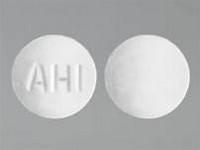Gemcitabine

Gemcitabine
CLINICAL USE
Palliative treatment, or first-line treatment with cisplatin, of locally advanced or metastatic non-small cell lung cancerPancreatic and breast cancer Bladder cancer in combination with cisplatinDOSE IN NORMAL RENAL FUNCTION
1–1.25 g/m2, frequency dependent on chemotherapy regimen; dose reduced according to toxicityPHARMACOKINETICS
DOSE IN RENAL IMPAIRMENT
GFR (mL/MIN)
DOSE IN PATIENTS UNDERGOING RENAL REPLACEMENT THERAPIES
IMPORTANT DRUG INTERACTIONS
Potentially hazardous interactions with other drugsADMINISTRATION
Reconstition
Reconstitute with sodium chloride 0.9%, 5 mL to 200 mg vial and 25 mL to 1 g vialCan be further diluted in sodium chloride 0.9% if requiredRoute
IVRate of Administration
30 minutesComments
–OTHER INFORMATION
Rapidly metabolised by cytidine deaminase in the liver, kidney, blood and other tissues. The active intracellular metabolites have not been detected in plasma or urine. Urinary excretion of parent drug and inactive metabolite (dFdU) accounts for 99%Terminal T½ is ~1 hour; this increases if the drug is administered over a longer periodCauses reversible haematuria with or without proteinuria in about 50% of patients; no evidence for cumulative renal toxicity with repeated dosing of gemcitabineHaemolytic uraemic syndrome (HUS) has been reported with a crude incidence rate of 0.015%A study looking at the use of gemcitabine 500–1000 mg/m2 administered IV on days 1, 8, and 15 every 28 days in patients with renal dysfunction, concluded that this regimen was well tolerated in patients with a GFR as low as 30 mL/min. (Data on file from Eli Lilly)Another study in patients with serum creatinine in the range 130–420 µmol/L, at doses of 650 mg/m2 – 800 mg/m2 weekly for 3 weeks out of a 4 week cycle, found dose limiting toxicities, including neutropenia, fever, raised transaminases and increased serum creatinine. It was concluded that a reduced dose of gemcitabine may be appropriate in patients with established renal impairment.
See how to identify renal failure stages according to GFR calculation
See how to diagnose irreversible renal disease
Home








